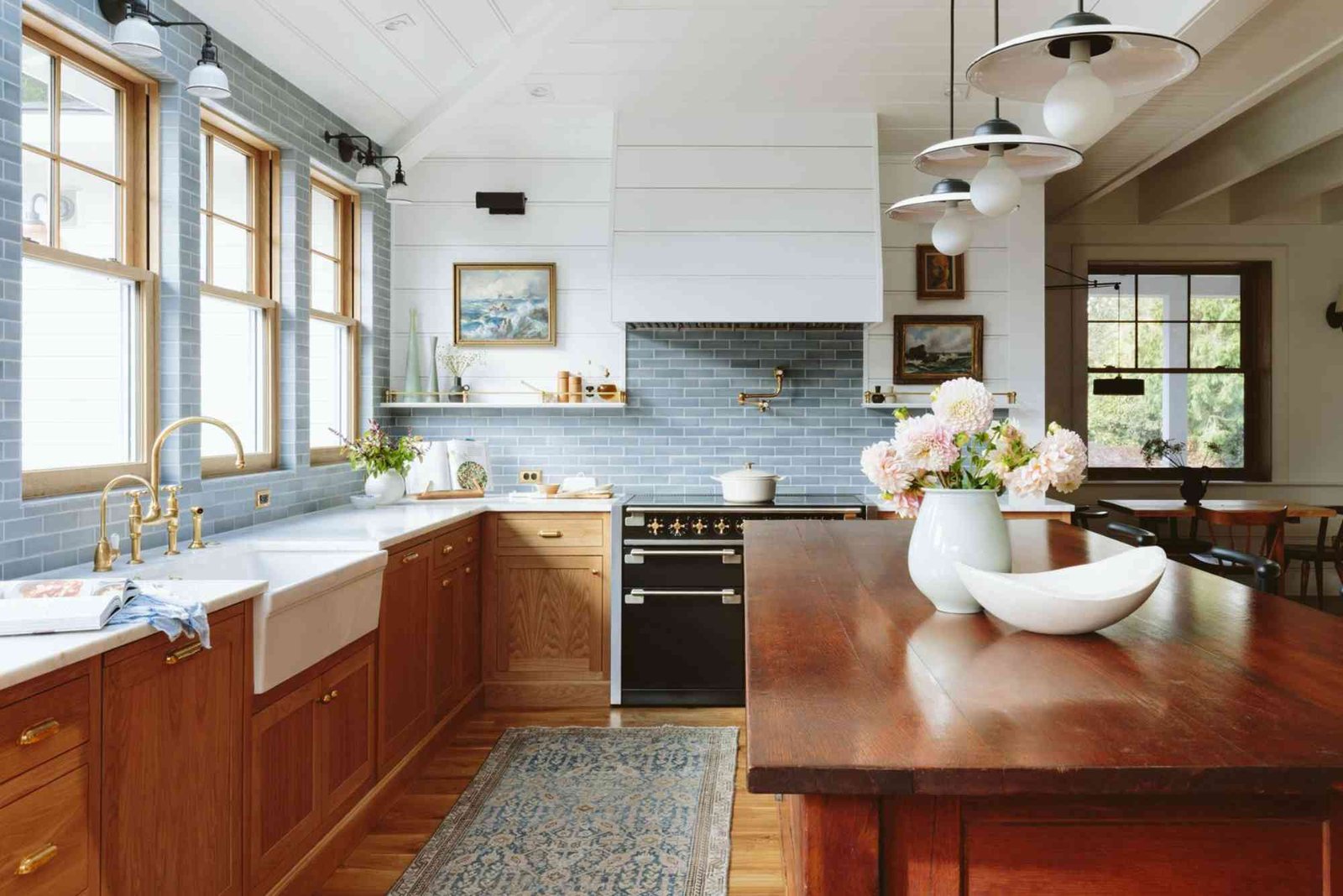Introduction
Working as a kitchen designer at Home Depot can be both rewarding and creatively fulfilling. This role combines customer service, design expertise, and practical project management skills. However, understanding the Home Depot Kitchen Designer Salary Tips & Common Mistakes can significantly affect your success and long-term growth. Whether you’re just starting your design journey or looking to advance your career, knowing what influences your pay, how to negotiate effectively, and which pitfalls to avoid will help you thrive in this competitive field.
Home Depot Kitchen Designer Salary Tips & Common Mistakes
A Home Depot kitchen designer is more than a salesperson. They are consultants who guide homeowners through the process of planning, budgeting, and building their dream kitchens. This includes selecting materials, colors, layouts, and coordinating with contractors or installers. Because the role blends creativity with technical precision, compensation depends on both skill and performance. Taking an in-depth look at Home Depot kitchen designer salary will help you understand how experience, sales results, and location impact overall income.
Understanding the Home Depot Kitchen Designer Salary
Home Depot kitchen designers typically earn a base hourly wage plus commissions or bonuses based on completed sales. Entry-level designers may start around $17 to $22 per hour, while experienced designers can earn $25 to $35 per hour or more. In addition, strong performers who exceed monthly sales goals can receive bonuses, pushing their annual earnings higher.
According to data from various employment review platforms, the average Home Depot kitchen designer earns between $50,000 and $70,000 annually. However, designers in high-cost living areas like California, New York, or Florida may earn more due to market differences. Your salary is not just about hourly rates—it’s also about your ability to close deals, maintain customer relationships, and offer creative, functional kitchen solutions.
Factors That Influence Your Salary
Experience and Skill Level
Designers with certifications in interior design or CAD (Computer-Aided Design) software generally earn more. Home Depot values technical knowledge and customer handling skills. The more experienced you are in handling complex projects, the higher your earning potential.
Location and Store Performance
Compensation often varies by region. High-volume stores in major metropolitan areas offer higher pay compared to smaller suburban locations. Store performance also affects bonuses—busy stores with large customer traffic often result in better commission opportunities.
Customer Satisfaction and Reviews
Home Depot places strong emphasis on customer satisfaction. Positive reviews and repeat business can influence a designer’s reputation, leading to more projects and higher bonuses.
Sales and Upselling Skills
Your ability to upsell premium materials, cabinetry, or installation packages directly affects your income. Sales proficiency is key—designers who communicate value rather than just price consistently earn more.
Essential Home Depot Kitchen Designer Salary Tips
To maximize your earnings, focus on developing both creative and business-oriented strategies.
Master Communication and Consultation Skills
Customers often walk into Home Depot with a vision but no clear plan. Listening carefully, asking the right questions, and translating their ideas into practical designs will build trust and boost your conversion rate.
Learn the Product Line Thoroughly
Home Depot offers thousands of kitchen-related products. Familiarize yourself with each brand’s benefits and limitations. This will allow you to make confident recommendations and earn customer trust.
Build Strong Client Relationships
Your clients are your best marketing resource. Follow up after installations, check satisfaction levels, and thank them for their business. Happy clients often refer others, increasing your project load and commissions.
Negotiate Smartly
When discussing your pay or potential raise, show your results. Bring data—sales numbers, positive feedback, and completed project statistics—to justify higher compensation.
Stay Updated on Design Trends
Kitchen design evolves constantly. Learn about modern color palettes, sustainable materials, and ergonomic layouts. Trend knowledge not only improves your design quality but also helps in upselling high-value materials.
For more insights and practical advice, you can read this in-depth look at home depot kitchen designer salary, which breaks down pay structures, incentives, and growth opportunities for designers in detail.
Common Mistakes to Avoid as a Home Depot Kitchen Designer
Even skilled designers can make errors that limit their earning potential. Avoiding these mistakes will help you stay ahead of the competition.
Ignoring Budget Constraints
Customers appreciate creativity, but overshooting their budget creates frustration and distrust. Always provide a range of design options—affordable, moderate, and premium—to suit their financial comfort zone.
Overcomplicating the Design
Too much detail can confuse homeowners. Simplicity sells better because clients can visualize it easily. Offer designs that balance style and functionality rather than overwhelming them with technical jargon.
Neglecting Follow-Up
A large portion of sales is lost due to lack of follow-up. Customers who receive professional post-consultation support are more likely to purchase. Regular communication also builds long-term trust.
Poor Time Management
Managing multiple clients and projects requires organization. Missing deadlines or scheduling errors can cost you sales and affect customer reviews. Use digital tools or Home Depot’s internal systems to track appointments and tasks efficiently.
Not Seeking Feedback
Ignoring client feedback prevents growth. Regularly ask customers about their design experience and identify areas for improvement. Constructive criticism strengthens your skills and reputation.
The Path to Advancement at Home Depot
Becoming a senior kitchen designer or design team leader is achievable with consistent performance. Home Depot often promotes designers who combine sales expertise with strong teamwork and leadership. Attending training workshops, mentoring junior designers, and maintaining high customer ratings can all pave the way to advancement.
Many designers also use their Home Depot experience to transition into independent design firms or real estate staging businesses. The mix of technical design knowledge and retail experience provides a strong foundation for long-term career growth.
Balancing Creativity and Sales
One of the biggest challenges is balancing creativity with revenue goals. As a designer, you must create beautiful, functional kitchens that also meet profit targets. To achieve this, focus on understanding customer psychology—what inspires them to invest in upgrades or premium materials. Combine aesthetic appeal with practicality. For instance, if a customer wants a minimalistic kitchen, recommend sleek designs that use cost-effective yet durable materials.
The Importance of Continuous Learning
The home improvement industry evolves rapidly. New products, software tools, and sustainability standards emerge every year. Take advantage of Home Depot’s training programs and online learning resources. Joining design communities and attending trade shows also helps in expanding your professional network.
If you’re passionate about lifestyle and design topics, you might also enjoy exploring food basics—a category that complements kitchen design by helping customers imagine how they’ll cook and live in their new space.
(FAQs)
How much does a Home Depot kitchen designer make per hour?
Most Home Depot kitchen designers earn between $17 and $35 per hour, depending on experience, performance, and store location.
Does Home Depot offer commissions or bonuses to kitchen designers?
Yes. Designers often receive performance-based bonuses or commissions for meeting sales goals, which can significantly increase annual earnings.
What qualifications do I need to become a Home Depot kitchen designer?
While formal education in design helps, strong communication skills, customer service experience, and product knowledge are essential. Training is provided on the job.
How can I increase my salary as a kitchen designer at Home Depot?
Focus on customer satisfaction, upselling premium products, and maintaining excellent project completion records. Negotiating based on proven results also helps.
Are there career growth opportunities at Home Depot for kitchen designers?
Absolutely. Successful designers can move into senior positions, management roles, or specialized design consulting within the company.
Understanding Home Depot Kitchen Designer Salary Tips & Common Mistakes is crucial if you want to grow in this rewarding field. Your earnings depend not only on sales numbers but also on your professionalism, creativity, and ability to build relationships. Avoiding common mistakes like ignoring client needs or poor time management will set you apart from others.
Continuous learning, trend awareness, and effective communication will help you reach new heights in your career. Remember, every successful project enhances your portfolio and strengthens your reputation as a trusted designer.
For industry insights and business collaborations, connect with our editorial partner for professional updates and design trends from around the world.
If you’re ready to advance your career and make the most of your skills, start today—refine your design process, communicate clearly, and aim for excellence in every project. Your next big opportunity might be just one satisfied client away.




